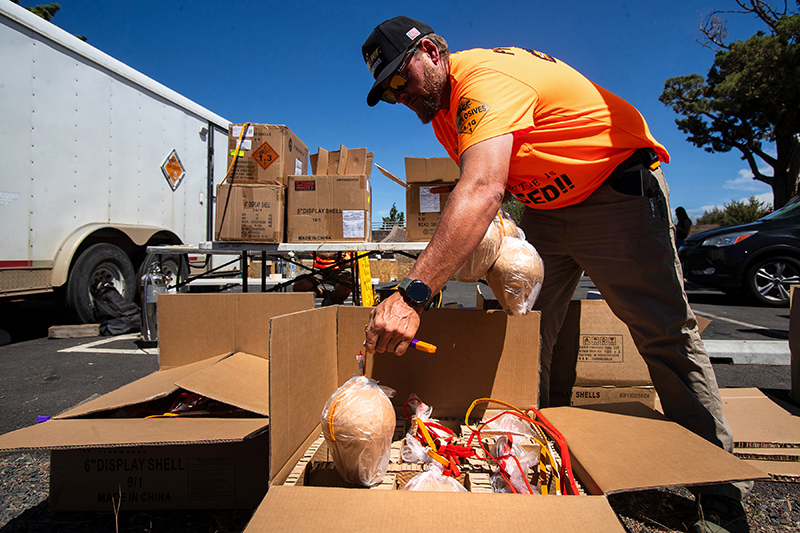Brighter clothing can help cyclists
Published 4:00 am Monday, November 12, 2012

- Local cyclocross team wins state
Here in Central Oregon, hardly a day goes by, it seems, during which I don’t catch glimpses of cyclists who are barely visible. Often these encounters happen at night, and those riders are wearing dark clothing and cruising along without lights. Sometimes they are even riding on the wrong side of the road — that is, riding against traffic rather than with it.
Sometimes, though, I experience difficulty spotting cyclists during daytime hours, especially in low light, in overcast conditions, when the cyclist is dressed in relatively muted colors, or even in the dark when the cyclist is using lights. Of course, doing everything right never guarantees a cyclist safety from motor vehicles. But riders can take steps beyond the bare minimum lighting standards required by law to enhance their visibility to other road users, and thus enhance their safety, in a number of conditions.
Brian Potwin of Commute Options, coordinator and lead instructor with the Bend nonprofit’s Safe Routes to Schools program, says the more precautions a cyclist can take, the better.
“I think combining them all together is the best way to be visible, as opposed to just having the minimum requirement of lights or having all the lights and reflectors,” Potwin said.
Oregon Revised Statute 815.280 requires that a cyclist have “a white light visible from a distance of at least 500 feet to the front of the bicycle” and “a red reflector or lighting device or material of such size or characteristic and so mounted as to be visible from all distances up to 600 feet to the rear when directly in front of lawful lower beams of headlights on a motor vehicle.” Also important, “The lighting equipment must be used during limited visibility conditions.”
Cyclists found in violation of these standards are subject to a fine of $250 and a Class D traffic violation.
Those requirements are not particularly stringent; for just a few bucks, you can buy at your local bike shop a white front light that can be seen from the minimum distance. And if your bike is equipped with a red rear reflector, which many bikes are, then you are in compliance with the law. But you may want to go one step — or even several steps — further to make your presence more visible on the roads. After all, your safety is at stake.
“Here, people are definitely more aware than usual about looking for cyclists and things like that,” said Michael Mataya, an employee at Hutch’s Bicycles in Bend. “But I just always stress for people to err on the side of caution and always don’t ever count on a car seeing you.”
To enhance your visibility, you can change what you wear while riding, alter what is on your bike, and even modify your riding behavior.
For one, consider purchasing cycling clothing equipped with reflective material. These strips and bits reflect light from motor vehicle lights and illuminate the wearer. Susan Bonacker, co-owner of the Sunnyside Sports bicycle shop in Bend, surveyed with me last week some of the clothing in her store on which this reflective material can be found. Near zippers on jackets, on pant legs, and even on the backs of shoes and on gloves are some examples.
“Reflective stuff that moves tends to catch people’s attention — stuff on your shoes, stuff on your clothing, stuff on your hands if you’re signaling,” Bonacker explained.
Mataya, Bonacker and Potwin also recommended bright colors for clothing and even pointed out or mentioned wearing helmets in flashy shades. Think fluorescent: yellow, green, orange or white. Those colors are flashy for a reason when it comes to cycling clothing.
“That really sticks out,” Mataya said. “People really see that, and I always advise people to get it not even because you might even think it looks cool, it’s just because people are going to see you.”
Also, you may want to consider upgrading your lighting system, especially if your lights are not strong. The cost of lights varies widely, from just a few dollars to hundreds. A solid $25 light can be seen from a mile away, Mataya said. Some lights are powerful enough to function like car headlights do, lighting a rider’s way. And Bonacker mentioned the importance of cyclists being able to see while they are riding, not just being seen by others.
“I think that a lot of people get locked into that they want a light so people can see them, and they’re not really worried about what they can see, but that’s kind of a myth,” she said. “You really do need to see what’s there, because there is stuff in the road … that can totally take you down.”
As for Potwin, the instructor for the Deschutes County bicycle diversion program and a bicycle commuter, he pointed out the role cyclists’ behaviors play when it comes to visibility.
“When you ride against (the flow of) traffic, the way I phrase it to all of my students is that you’re basically invisible,” he noted. “When you think about the field of vision of a motor vehicle driver, and where they’re actually looking, if you’re riding against traffic, you’re in a blind spot. And so, effectively, you are invisible in traffic.”
So be seen and be safe — night and day. Even lights are not necessarily just for nighttime riding.
Said Potwin: “It’s not just at night you’re supposed to have (lights). It’s during the daytime too if it’s foggy or if it’s starting to snow or raining — any number of conditions.”








